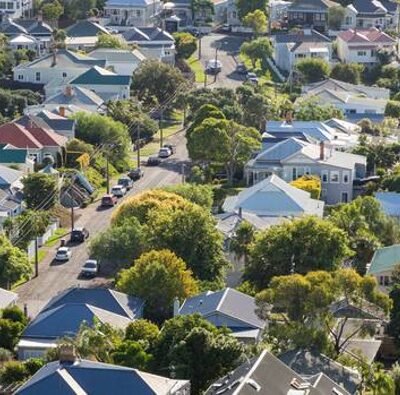
Property investing can add diversification to a balanced investment portfolio, providing a buffer against market turbulence with less volatility, while also offering investors an income stream from rentals, tax rebates and the potential for capital gains on selling the property.
However, realising these benefits requires careful consideration of the type of property and various market factors. In this regard, prospective property investors often grapple with the decision to allocate their capital to residential or commercial real estate.
In simple terms, residential properties are designed for living purposes and include free-standing homes or apartments, whereas commercial properties serve business purposes and span the office, retail, and industrial sectors.
As both have pros and cons, the choice largely depends on individual preferences, financial capabilities, and investment goals. Making an informed decision in this regard entails distinguishing between the two segments and the market dynamics and drivers influencing their performance.
Investors in both residential and commercial property can face challenges, including troublesome tenants, unforeseen costs, economic downturns, elevated interest rates, inflation, vacancies, shifts in location favourability, power outages, and the complexities of liquidating a property for immediate access to cash, which may offset the many potential advantages.
While the potential risks are similar, the inherent risk profiles in residential and commercial real estate differ, Making the appropriate decisions requires that investors assess their initial investment capacity, ongoing operational costs, desired income levels, and expected returns.
As a starting point, the barriers to entry for commercial properties are higher than in the residential sector. However, the potential returns are greater.
According to data compiled by ooba Home Loans, a mortgage comparison service, the capitalisation rate on commercial property is 11% compared with 5-8% for residential real estate.
However, while this is a popular metric to measure the yield of a property over a year, the capitalisation rate does not account for improvements and should not serve as the sole consideration.
Another important factor informing investment decisions in the residential property market relates to house price growth, which has failed to keep up with inflation for more than two years. Factors such as a stagnant job market, rising fuel costs, and an economy hampered by a lack of skills, corruption and the collapse of government services, including electricity, rail and port logistics, health and education, have impacted affordability among consumers and dampened demand.
However, despite the recent declines in housing demand, the latest FNB House Price Index suggests the market may experience a modest uptick in house price growth in the second half of 2024 on the back of lower interest rates, and a moderate improvement in economic growth and the job market.
Recent forecasts from the South African Reserve Bank (SARB) in its January 2024 statement support this outlook, suggesting that core inflation should average 4.6% this year and in 2025, compared to 6% in 2023, which would support cuts in the interest rates and, by implication, support activity in the property market.
Investors opting for commercial sector exposure must consider performance dispersion across the three commercial property segments, which is variable due to economic factors and shifting market trends that impact differently on the office, retail and industrial sectors.
Currently, the office market finds itself in the worst state of the three non-residential property classes. The spread of COVID-19 forced many employees to work from home to contain the virus, forcing a shift in the traditional workplace paradigm that has endured beyond the pandemic.
Many companies have since embraced a hybrid work model in response to a shift in employee preferences as such, staff only work a few days a week in the office, which has reduced demand for office space, especially within major nodes. Although there are signs of improvement, a sustained recovery is contingent on significant economic growth.
Nevertheless, there was a notable decrease in overall vacancies during the third quarter of 2023, marking five consecutive quarters of improvement. According to the South African Property Association’s Office Vacancy Survey, this positive trend comes after vacancies reached a record high in the second quarter of 2022. However, an oversupply of office space, particularly in Johannesburg, has impacted rental rates, with the region contending with the highest vacancies among the major metros.
In the retail sector, the downturn in retail sales, which dropped by 1% in 2023, has adversely affected shopping malls. Consequently, the growth in trading densities for prime retail space did not match the pace of the Consumer Price Index (CPI) in 2023, according to the Clur Shopping Index. This implies that, when adjusted for inflation, retailers sold less in rand terms per square meter of store space last year compared to 2022.
Among commercial property options, the Rode State of the Property Market report for Q4 2023 reveals that the industrial property sector outperformed residential and retail markets. Warehousing, in particular, thrived on robust demand from logistics and storage, with the overall industry maintaining low vacancy rates and strong rental growth. Yet, signs of a slowdown are emerging due to economic challenges impacting the manufacturing, logistics and retail industries.
Based on these factors and shifting market dynamics, many of South Africa’s largest listed property companies are rejigging their portfolios to benefit from new opportunities, which could inform decisions among individual investors.
For example, Growthpoint, the largest South African primary Real Estate Investment Trust (REIT) listed on the JSE, is disposing of offices and is rotating into high-demand industrial properties. In addition, the company is reducing its presence in Gauteng in favour of the outperforming Western Cape market.
Investors can also gain indirect exposure to the property market by buying shares in REITs, which offer various options. Over the past 12 months, shares of companies with offshore earnings have surpassed those of South African-exposed firms. However, local REITs offer higher dividend yields than international REITs, with data from Catalyst Fund Managers indicating that South African-centric property companies trade at a 38% discount to their net asset value, compared to 16% for international-focused businesses.
Considering the various sector-specific challenges and opportunities, taking a discerning approach when constructing a property investment portfolio with the right combination of property classes and companies and the appropriate exposure to sectors is crucial for prospective real estate investors in South Africa who want to realise their investment goals.





